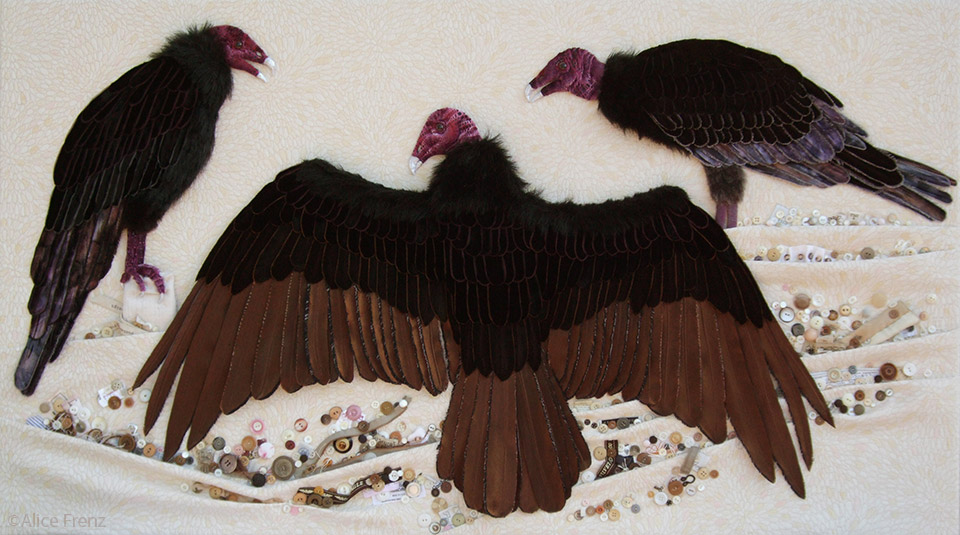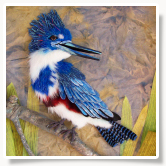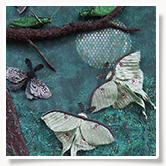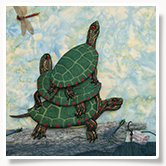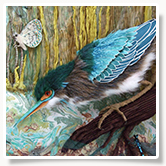Vogue Vultures at Button Beach
When I see groups of turkey vultures standing at the edge of the lake, there is often one with its wings outstretched rotating slowly as the others seem to watch and critique. (This is known as the Horaltic pose and there are different theories as to why vultures do this.) My imagination sees them as mature ladies of fashion showing off their fine formal attire to each other. I think it partially comes from my days when I was a teen working at a once a month Big Band Ballroom Dance Club in the late 1970’s. It was mostly an over 50 crowd and did they know how to dress up! I often felt like I should have been the one who paid to be there just for the vintage fashion show.
While sketching ideas for this design, I had also been thinking about the challenges of recycling items made of mixed materials as I was reading William McDonough and Michael Braungart’s book Cradle to Cradle. One day out on the lake, my husband and I saw some turkey vultures following a large belly up catfish being carried swiftly along by wind and waves to an area of beach where I always enjoy looking among all the small pieces of broken stone to see what interesting things I can find. As we watched them feast on the fish after it washed up on shore, I began to thinking about their role as nature’s recyclers in a way and wondered what part of the fish they wouldn’t eat or “recycle”. We returned to the beach after they were done to look around and found they left behind some bones and fins; the hardware so to speak.
Back in my studio as I selected fabrics for my vultures, I began to ask myself what things might be left behind on the beach in my design if my fashionable velvet vultures ate/consumed clothing? I then began collecting fashion “discards” of old clothing and clothing “hardware” tags, buttons, snaps, hooks, and a zipper from family and friends and incorporated them into my beach and as underlying construction fabrics in my collage, especially in the “anatomy” of the birds underneath their velvet, taffeta, and faux fur.
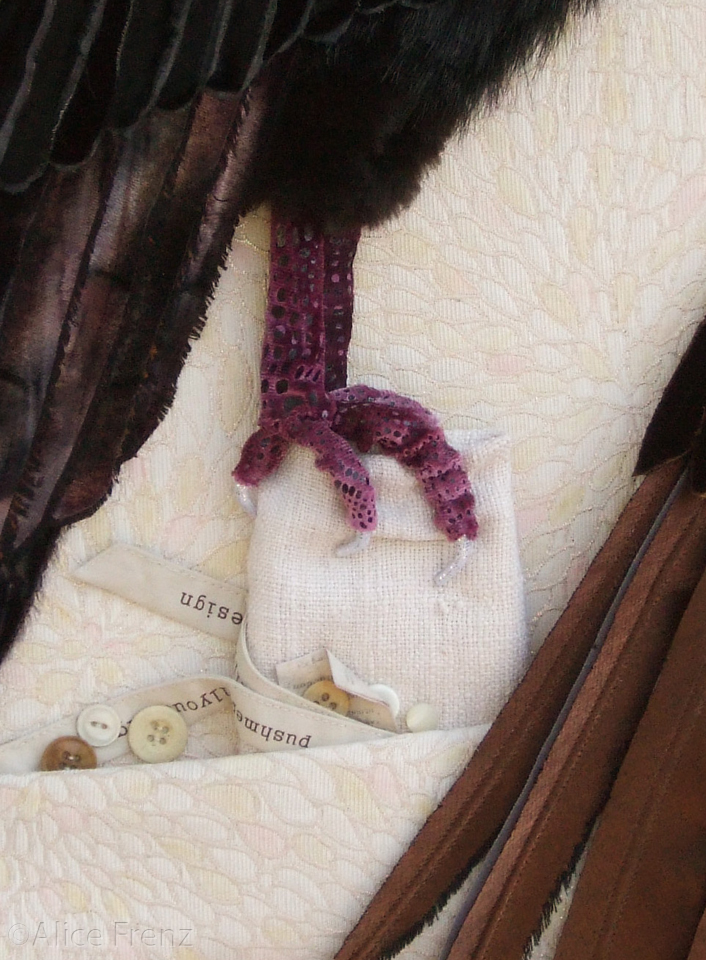
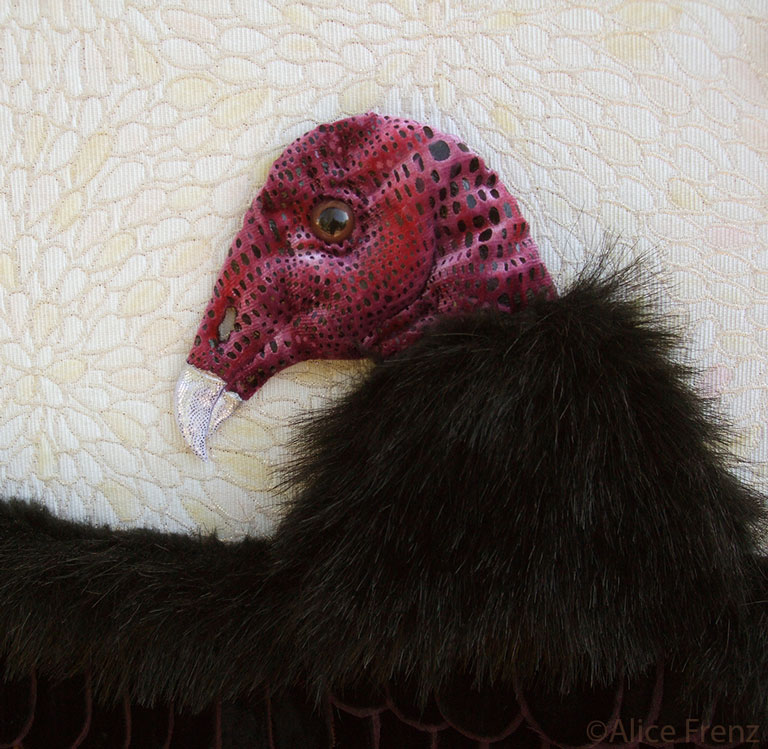
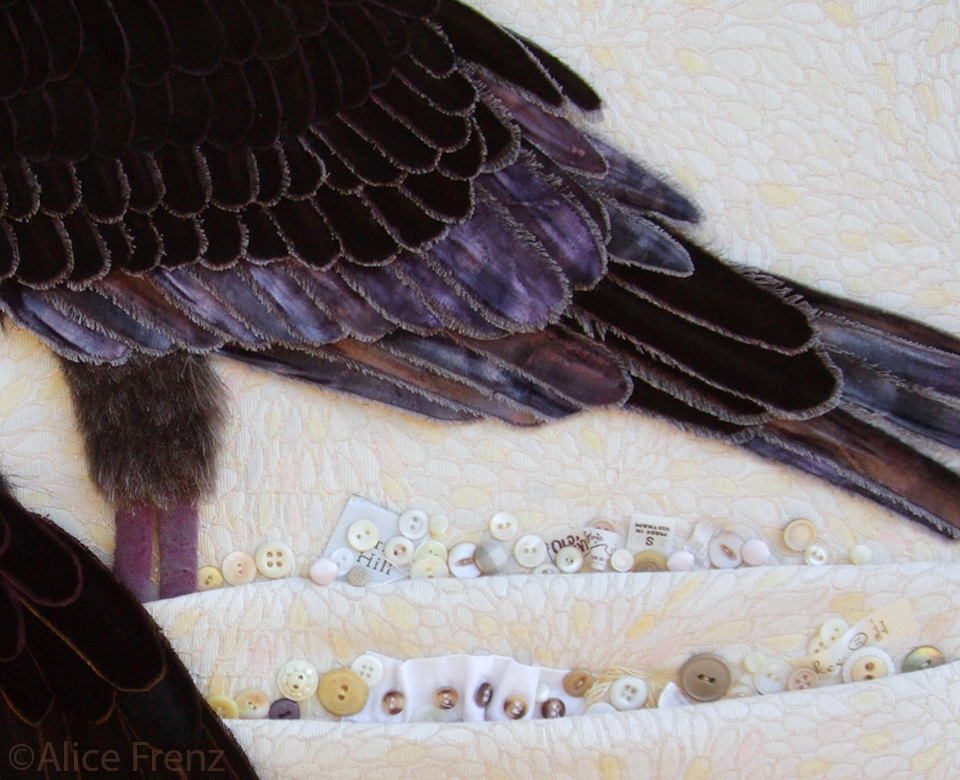
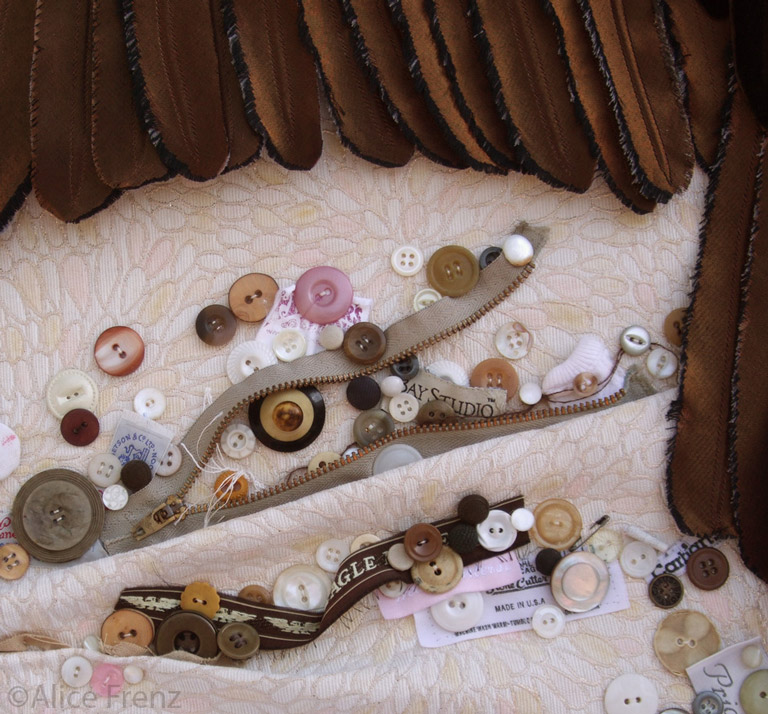
Click on a thumbnail to view page

